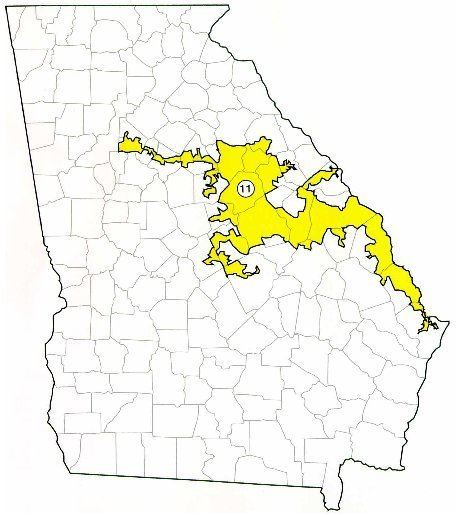Concurrence O'Connor End date 1995 | Dissent Stevens | |
 | ||
Full case name Zell Miller v. Davida Johnson Citations 515 U.S. 900 (more)115 S. Ct. 2475 Prior history On appeal from U.S. District Court for the Southern District of Georgia. Together with No. 94-797, Abrams et al. v. Johnson et al., and No. 94-929, United States v. Johnson et al., also on appeal from the same court. Majority Kennedy, joined by Rehnquist, O'Connor, Scalia, Thomas Similar Shaw v Reno, Adarand Constructors - Inc v Peña, Wesberry v Sanders, Reynolds v Sims, Baker v Carr | ||
Miller v johnson 1995
Miller v. Johnson, 515 U.S. 900 (1995), was a United States Supreme Court case concerning "affirmative gerrymandering/racial gerrymandering", where racial minority-majority electoral districts are created during redistricting to increase minority Congressional representation.
Contents
Background
Only one of Georgia's ten congressional districts was primarily African American between 1980 and 1990. According to the 1990 Census, Georgia's increase in population entitled the state to an eleventh congressional seat. That prompted Georgia's General Assembly to re-draw the state's congressional districts. After the Justice Department denied several of the Assembly's proposed new districts, as the state's population was 27% African-American, but formed a majority in only one of the now 11 districts, the Assembly drew the 11th district to create a second majority-black district. However the district lacked any sort of organic structure, and was deemed a "geographic monstrosity" because it extended 6,784.2 square miles from Atlanta to the Atlantic Ocean. The case was brought to court by white voters in the Eleventh Congressional District of the state of Georgia.
Question Before the Supreme Court
Is racial gerrymandering of the congressional redistricting process a violation of the Equal Protection Clause?
Decision of the Court
Writing for the majority, Justice Kennedy wrote the opinion for the Court. Ruling against the district, the Court declared the district unconstitutional under the Equal Protection Clause of the Fourteenth Amendment, according to the interpretation in Shaw v. Reno (1993). The court noted that in some instances, "a reapportionment plan may be so highly irregular and bizarre in shape that it rationally cannot be understood as anything other than an effort to segregate voters based on race." Applying the rule laid down in Shaw v. Reno requires strict scrutiny whenever race is the "overriding, predominant force" in the redistricting process.
